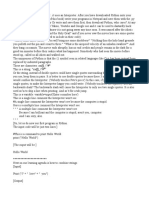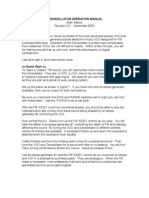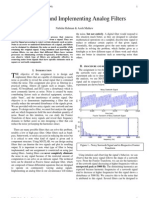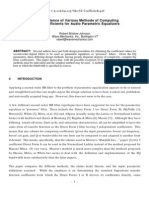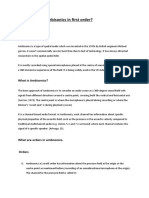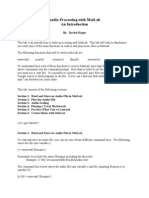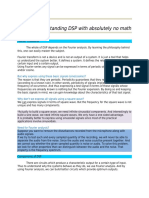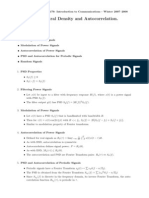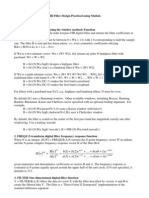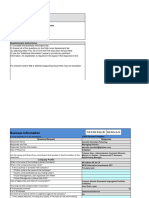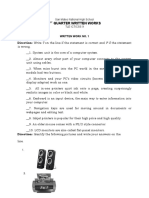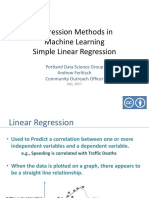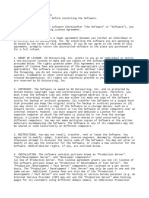0% found this document useful (0 votes)
129 views27 pagesMATLAB Audio Processing Guide
MATLAB can be used for audio signal processing tasks like importing audio data, analyzing the frequency content using Fourier transforms, and modifying the audio spectrum by filtering. The document discusses getting audio into MATLAB, playing and displaying the spectrum, using FFT for analysis, designing and applying FIR and IIR filters to modify the spectrum in the time or frequency domain. It provides examples of commands in MATLAB to perform these audio processing steps.
Uploaded by
Our Sarkari JobCopyright
© © All Rights Reserved
We take content rights seriously. If you suspect this is your content, claim it here.
Available Formats
Download as PDF, TXT or read online on Scribd
0% found this document useful (0 votes)
129 views27 pagesMATLAB Audio Processing Guide
MATLAB can be used for audio signal processing tasks like importing audio data, analyzing the frequency content using Fourier transforms, and modifying the audio spectrum by filtering. The document discusses getting audio into MATLAB, playing and displaying the spectrum, using FFT for analysis, designing and applying FIR and IIR filters to modify the spectrum in the time or frequency domain. It provides examples of commands in MATLAB to perform these audio processing steps.
Uploaded by
Our Sarkari JobCopyright
© © All Rights Reserved
We take content rights seriously. If you suspect this is your content, claim it here.
Available Formats
Download as PDF, TXT or read online on Scribd
/ 27












